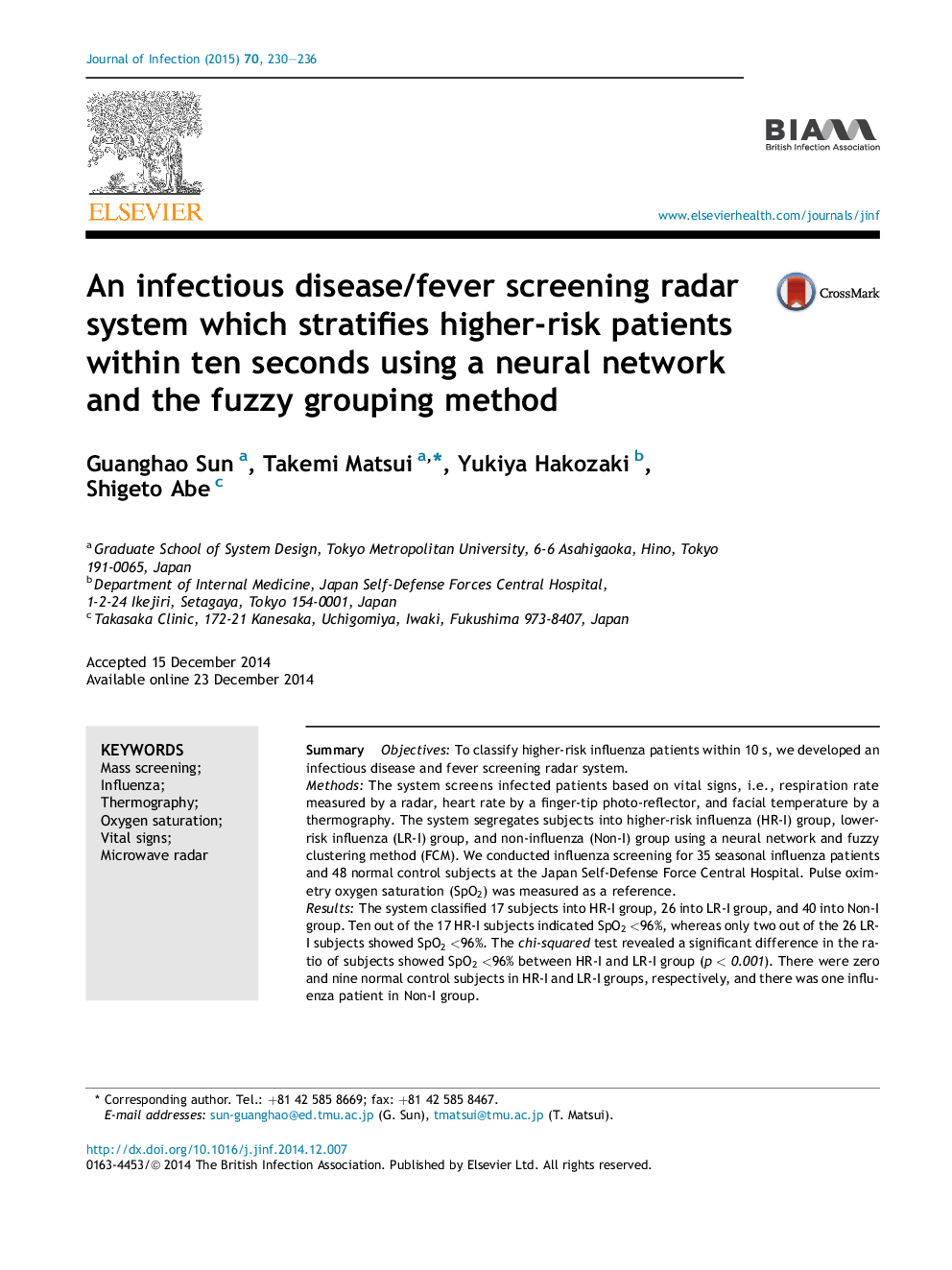| Article ID | Journal | Published Year | Pages | File Type |
|---|---|---|---|---|
| 3374548 | Journal of Infection | 2015 | 7 Pages |
•A novel infectious disease/fever screening radar system stratifies higher-risk patients within ten seconds.•Use of an optimal neural network and the fuzzy clustering method to classify multiple-dimensional vital signs data.•The system can be used for preventing secondary exposure of physicians during outbreaks of infectious disease.•The system has potential to serve as a helpful tool for rapid mass screening of infectious disease.
SummaryObjectivesTo classify higher-risk influenza patients within 10 s, we developed an infectious disease and fever screening radar system.MethodsThe system screens infected patients based on vital signs, i.e., respiration rate measured by a radar, heart rate by a finger-tip photo-reflector, and facial temperature by a thermography. The system segregates subjects into higher-risk influenza (HR-I) group, lower-risk influenza (LR-I) group, and non-influenza (Non-I) group using a neural network and fuzzy clustering method (FCM). We conducted influenza screening for 35 seasonal influenza patients and 48 normal control subjects at the Japan Self-Defense Force Central Hospital. Pulse oximetry oxygen saturation (SpO2) was measured as a reference.ResultsThe system classified 17 subjects into HR-I group, 26 into LR-I group, and 40 into Non-I group. Ten out of the 17 HR-I subjects indicated SpO2 <96%, whereas only two out of the 26 LR-I subjects showed SpO2 <96%. The chi-squared test revealed a significant difference in the ratio of subjects showed SpO2 <96% between HR-I and LR-I group (p < 0.001). There were zero and nine normal control subjects in HR-I and LR-I groups, respectively, and there was one influenza patient in Non-I group.ConclusionsThe combination of neural network and FCM achieved efficient detection of higher-risk influenza patients who indicated SpO2 96% within 10 s.
Graphical abstractFigure optionsDownload full-size imageDownload high-quality image (189 K)Download as PowerPoint slide
